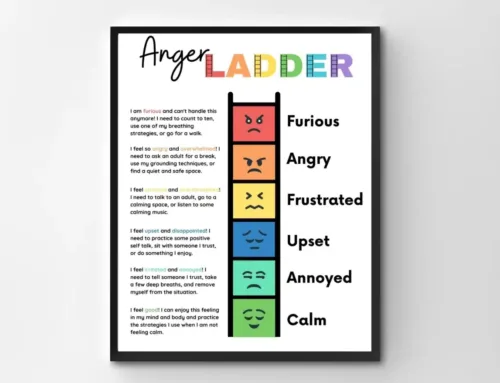Anger is part of human nature and can be guided. This article answers what are the 4 Cs of anger management and shows how managing anger improves daily life, relationships, and health. You will see practical techniques and tips that help you breathe deeply, focus on the present, and take the first step toward balance and responsibility.
What are the 4 Cs of anger management?
Calm, Control, Communicate, and Change give a simple framework to control anger and reduce aggression.
- Calm – uses deep breathing and relaxation techniques to cool reactions within minutes.
- Control – applies thought skills that challenge negative thoughts and reduce fear based interpretations.
- Communicate – helps you express needs with clear requests that protect boundaries and connection.
- Change – uses problem solving and small environment tweaks so the same subject does not push you into angry reactions again.
For a practical overview or you need further help, start with our Anger Management counselling service.
How do I use Calm in the moment?
Slow the body and extend the gap before you act with a two minute breath reset and a short break.
- Practise box breathing, 4–4–4–4, for two minutes. Inhale 4, hold 4, exhale 4, hold 4, repeat eight rounds. This deep breathing lowers heart rate and helps you feel cool, steady, and present.
- Take a two to five minute break and step to a quiet space, if it is safe to do so. Fresh air and a posture reset help your body feel less threatened.
- Drop your shoulders, loosen your jaw, and slow your speech to signal safety to the other person.
- Use a one line self cue to remind your head and body of the plan: “Pause, breath, choose.”
If you want simple routines you can apply today, read Meditation and Mindfulness Strategies.
How do I use Control to change hot thoughts?
Challenge all or nothing beliefs and mind reading so thoughts support better behaviour.
- Spot “always”, “never”, “must”, and “should” in self talk, then replace them with specific statements grounded in truth and circumstances.
- Swap intent guesses with a testable line such as, “I will ask for clarity.” This reduces anxiety and keeps you connected to the present subject.
- Use these replacements when you feel distracted or angry:
- “I can slow down and choose one positive step.”
- “I can speak with compassion and keep boundaries.”
- “I can take two minutes to breathe deeply and return ready to deal with the issue.”
Build these abilities with What Is Cognitive Behavioural Therapy (CBT). Research supports CBT for developing control over emotional reactions and for reducing depression and anxiety that often travel with anger.
How do I use Communicate to reduce conflict?
Use I statements, one topic at a time, and reflective listening to lower heat and protect connection.
- Model an I statement with behaviour, impact, and request: “When the meeting starts late, I feel stressed because I have back to back calls. I need us to start on time or shorten the agenda.”
- Mirror with “What I hear is…” and confirm the next step so both people feel heard.
- Set a 20 minute cap for hard talks to prevent overload and agree to pause and resume later, if needed.
These communication skills reduce risk in relationships and increase confidence when you express needs. For step by step dialogue tools, see Resolve Conflict with Better Communication.
How do I use Change to prevent repeat outbursts?
Fix triggers with small, testable steps and review progress within 24 hours.
- Define the problem in one line, pick one action, and review tomorrow.
- Adjust environment and routines that tend to raise stress, for example sleep, caffeine after midday, and late screen time.
- Plan buffers before friction points such as traffic, tight deadlines, or pickup times with a specific person.
A wider toolkit is here: Stress Management Techniques.
Why does control of anger matter?
Control protects health, career, and relationships by reducing harm and improving decisions.
Better regulation links with lower blood pressure, safer choices under threats, and faster repair after conflict. Over time, steady skills support physical health and emotional balance. For the stress pathway, read How Prolonged Stress Creates Illness.
What triggers anger the most?
Fairness, respect, control, and overload are common triggers in daily life.
Examples include queue cutting, interruptions, noise, missed deadlines, or a belief that someone did you wrong on purpose. Map people, places, and topics that push your buttons, then plan one buffer for each cluster. For context and examples, see Anger and Frustration.
What are the first signs of an anger problem?
Early cues appear in body, emotion, and behaviour before an outburst.
Body signs include a tight jaw, hot face, and a fast head of steam. Emotional signs include fear, irritation, and hostile rumination. Behaviour signs include interrupting, swearing, sarcasm, or door slams. Being aware of these signs lets you apply Calm and Control as the first step.
How can I tell if I have anger issues?
Check frequency, intensity, harm, and loss of control to decide if help is needed.
Ask if outbursts occur weekly or more, if regret follows, or if someone feels hurt or unsafe. Note feedback from family or work and any impact on trust. If patterns persist, compare options and book support via Counselling Services.
Do main types of anger exist?
Hot anger, cold anger, and suppressed anger show different risks and need different responses.
Hot anger shows explosive reactions and quick regret. Cold anger holds grudges and may use withdrawal. Suppressed anger turns into tension or passive aggression. The 4 Cs help across these patterns because they address breath, thoughts, talking, and environment.
Can anger hurt relationships?
Unchecked anger erodes safety, respect, and repair, which increases distance over time.
Criticism, contempt, and stonewalling undermine connection. Repair with three steps. Own the action, validate the impact, and state a plan for next time. Taking responsibility builds trust and keeps the relationship connected to what matters, not just the negative.
Is anger always a bad emotion?
Anger is a healthy emotion when guided with control and compassion.
Assertive anger signals needs without attack and protects boundaries. Suppression often backfires. The goal is choice, not denial. Use Calm and Control to cool the body, then Communicate and Change what you can in the environment.
How does anger affect mental health?
Frequent anger links with anxiety, depression, and poor sleep through rumination and stress hormones.
Night time overthinking delays sleep, and fatigue shortens the fuse the next day. Integrated care works best when anger connects with other emotions such as sadness or worry. Start here: What Is Anxiety.
What happens if anger is left unmanaged?
Risks rise for health problems, legal issues, and job loss as incidents escalate.
Repeated spikes load the cardiovascular system and increase the risk of conflict at home or work. Earlier help leads to faster turnarounds and better life outcomes. If anxiety fuels reactivity, build a plan with Anxiety Management Strategies.
What role does stress play in anger?
High load and low recovery shorten the fuse and make small hassles feel huge.
Sleep debt, late caffeine, and constant demands increase irritability. Create a weekly plan that includes exercise, rest, and micro resets so your baseline stress is lower. This commitment to recovery supports calm reactions and long term progress.
What quick steps help right now?
Use a two minute reset and one small change today to lower risk fast.
- Breathe 4–4–4–4 for two minutes to cool the body and head.
- Take a two to five minute break and step away, if it is safe to do so.
- Choose one action for the next trigger, for example leave five minutes early or set a 20 minute cap for a hard talk.
These techniques help you deal with the moment and keep focus on positive change.
Where can I get more help?
Book support if anger risks safety, health, or work, and contact us directly for tailored care via Contact page to discuss individual counselling, group programs, or a structured anger management plan; you can also review options on our Counselling Services overview page.
If anyone is at immediate risk, call 000 in Australia, and for out of hours support contact Lifeline on 13 11 14, MensLine Australia on 1300 78 99 78, or Beyond Blue on 1300 22 4636.
Related Posts
Fees And Rebates
We offer cost-effective solutions that can fit within your budget. The insights and skills acquired in therapy can continue to positively impact mental and emotional health long after the therapy sessions have ended, making it a truly worthwhile investment in yourself.















